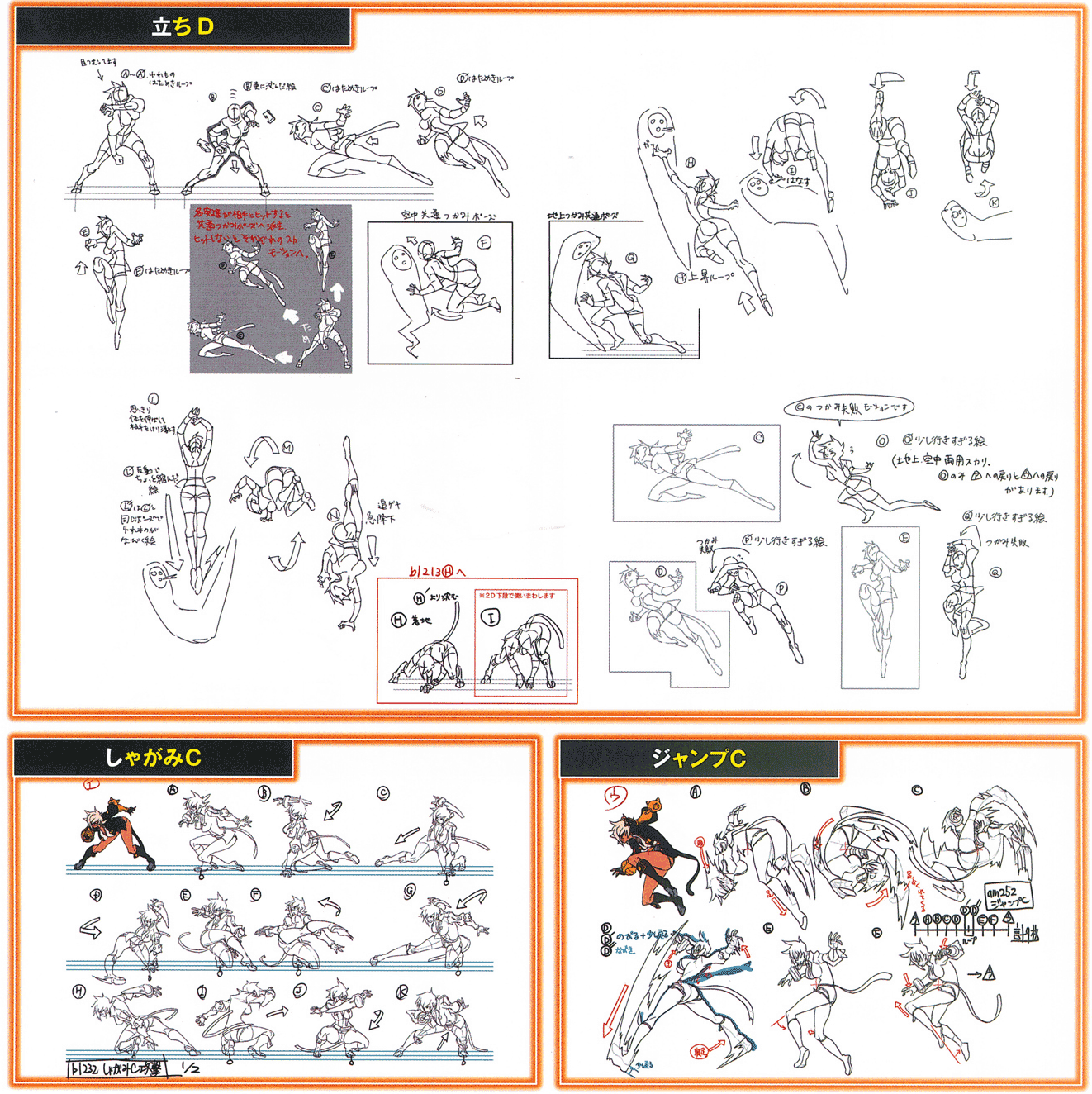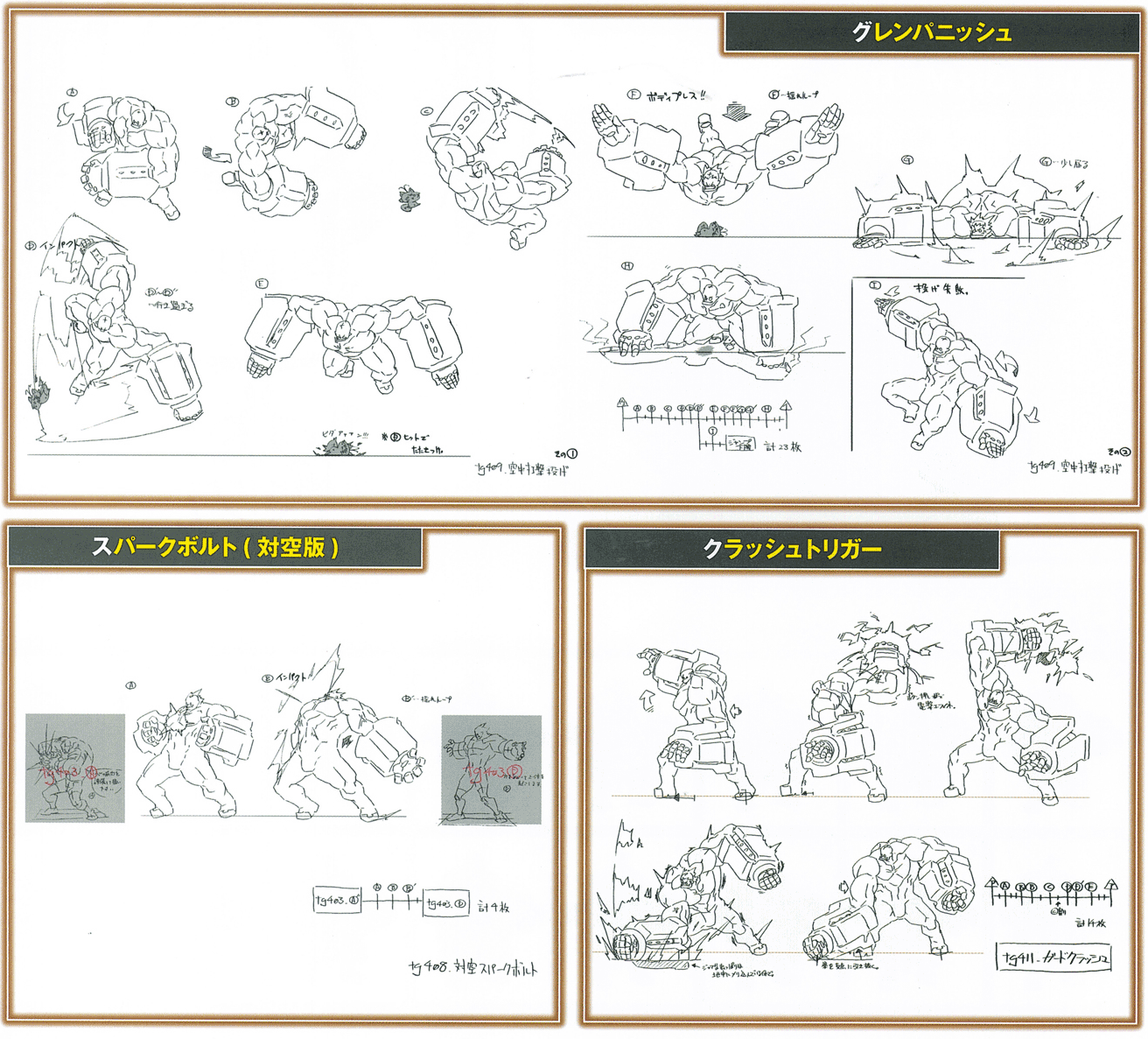08-20-2015, 06:14 PM
I'll update op with your links, thanks for sharing.
--------------------------------------------------------------------------
Maybe I'll update this thread like a thought blog because there are several things I've been wanting to talk about but couldn't find people who were interested.
Gesture
This is a fundamental skill that is discussed when it comes to both animating and drawing figures. When I was starting I was very confused by this topic because everyone has a different style. But I've come to realize it is merely a short hand and method for problem solving - posing. So I needed to come up with my own.
Actually, I am not too big a fan of Hampton's gestures. A lot of the images that you find when you search gesture drawing into google are exaggerated and artistic focusing mostly on graphic curves and flows. I prefer a more 3d approach rather than diluting the figure down into graphic relationships.
![[Image: michael-hampton-figure-drawing-design-an...1366760013]](http://image.slidesharecdn.com/michaelhampton-figuredrawing-designandinvention-130423232526-phpapp02/95/michael-hampton-figure-drawing-design-and-invention-15-638.jpg?cb=1366760013)
Influence
The book that had the biggest influence on me is called
Blazblue Chrono Phantasma Collection (Very "findable" on the internet)


Personal Gesture Criteria
I was inspired by how easy and simple they made the figures, and they also felt very solid and spatial.
After looking at this book, I tried to break down the problem of "posing" as simple as possible into these parameters
-Balance & Function
-Perspective and Eye Level
-Action of Spine// Tilt of shoulder & hips (I like to think of this as a single problem)
-anatomical details (Last in terms of importance)
Visualization & Purpose
A problem I would critique for many people just starting out is way too much focus on anatomy in figure drawing. From the few sketchbooks I've visited, rendering and anatomical knowledge are very good, but foundational drawing (perspective and form) are off. By focusing so much on detail and rendering I often see very weird posing, combined with very high level of painting, which instantly ruins the artwork for me.
A problem I had/ and still have is visualization. People would often say they see images. Personally, I dont see anything and I doubt that is actually how our brain works, because if it was, then animating would be very easy. I think a lot of people tend to draw very randomly, and that is why poses tend to be so awkward. But if you can create a mental checklist, and come up with a story/function for your character before you start, at least you have a criteria you are working towards.
And by practicing this over and over again, you can close the effort gap between the criteria you set up for yourself and the end result. So whenever I do gesture studies, I constantly deconstruct the factors I deemed important above, and practice reconstructing through copying. Don't just blind copy images when you study but focus on deliberate learning.
--------------------------------------------------------------------------
Maybe I'll update this thread like a thought blog because there are several things I've been wanting to talk about but couldn't find people who were interested.
Gesture
This is a fundamental skill that is discussed when it comes to both animating and drawing figures. When I was starting I was very confused by this topic because everyone has a different style. But I've come to realize it is merely a short hand and method for problem solving - posing. So I needed to come up with my own.
Actually, I am not too big a fan of Hampton's gestures. A lot of the images that you find when you search gesture drawing into google are exaggerated and artistic focusing mostly on graphic curves and flows. I prefer a more 3d approach rather than diluting the figure down into graphic relationships.
![[Image: michael-hampton-figure-drawing-design-an...1366760013]](http://image.slidesharecdn.com/michaelhampton-figuredrawing-designandinvention-130423232526-phpapp02/95/michael-hampton-figure-drawing-design-and-invention-15-638.jpg?cb=1366760013)
Influence
The book that had the biggest influence on me is called
Blazblue Chrono Phantasma Collection (Very "findable" on the internet)


Personal Gesture Criteria
I was inspired by how easy and simple they made the figures, and they also felt very solid and spatial.
After looking at this book, I tried to break down the problem of "posing" as simple as possible into these parameters
-Balance & Function
-Perspective and Eye Level
-Action of Spine// Tilt of shoulder & hips (I like to think of this as a single problem)
-anatomical details (Last in terms of importance)
Visualization & Purpose
A problem I would critique for many people just starting out is way too much focus on anatomy in figure drawing. From the few sketchbooks I've visited, rendering and anatomical knowledge are very good, but foundational drawing (perspective and form) are off. By focusing so much on detail and rendering I often see very weird posing, combined with very high level of painting, which instantly ruins the artwork for me.
A problem I had/ and still have is visualization. People would often say they see images. Personally, I dont see anything and I doubt that is actually how our brain works, because if it was, then animating would be very easy. I think a lot of people tend to draw very randomly, and that is why poses tend to be so awkward. But if you can create a mental checklist, and come up with a story/function for your character before you start, at least you have a criteria you are working towards.
And by practicing this over and over again, you can close the effort gap between the criteria you set up for yourself and the end result. So whenever I do gesture studies, I constantly deconstruct the factors I deemed important above, and practice reconstructing through copying. Don't just blind copy images when you study but focus on deliberate learning.







